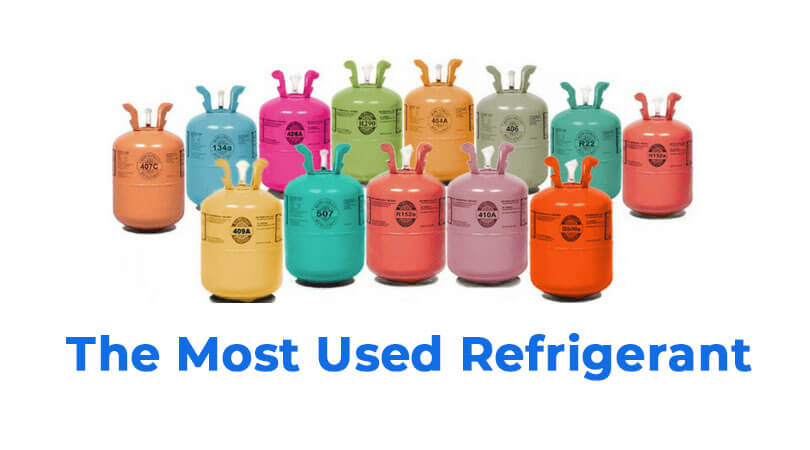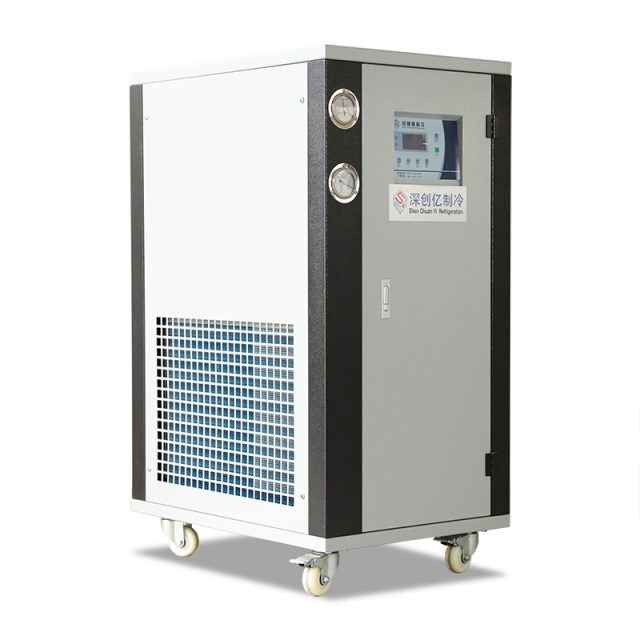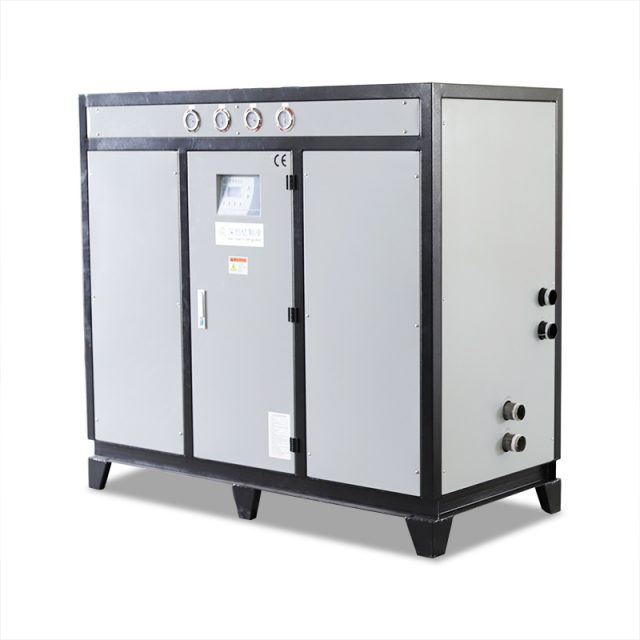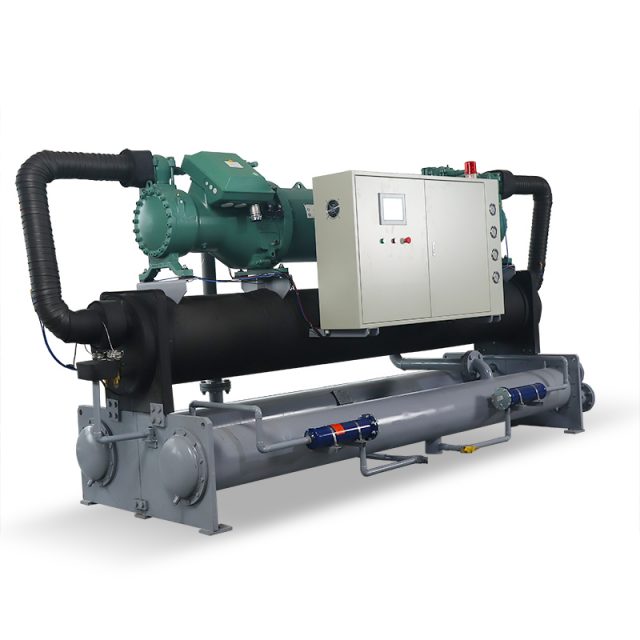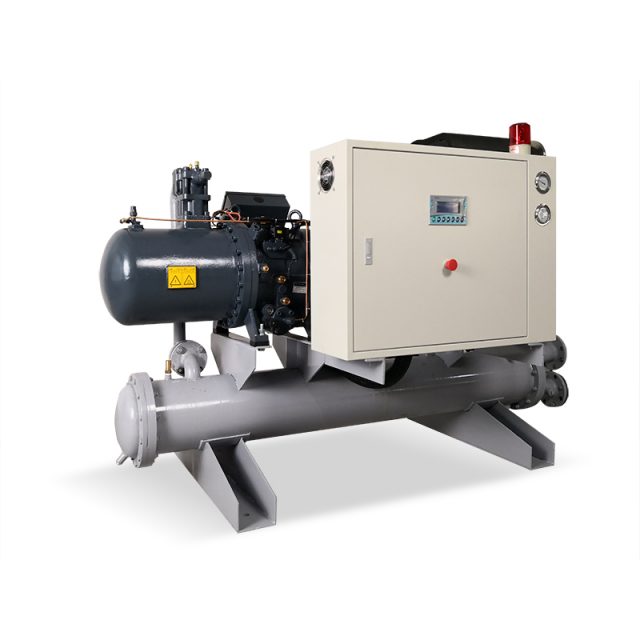Most Used Refrigerant in Chillers – What refrigerants are used today?
1. Water
Using water as a refrigerant is a low-cost solution that is completely non-toxic, easily available, and environmentally friendly. However, the choice of water-based refrigerants also has major disadvantages, including:
- The ambient temperature easily affects the efficiency of the cooling process
- Compared with some alternatives, water can cause corrosion, damage refrigerant components, and drive up maintenance costs faster.
2. R407C
The combination of hydrofluorocarbons difluoromethane (R32), pentafluoroethane (R125) and 1,1,1,2-tetrafluoroethane (R134A) will respectively provide heat, reduce flammability and reduce pressure. This refrigerant is recommended as the most suitable substitute for the R-22 refrigerant system, and the R-22 refrigerant system will be phased out before 2020.
3. R404A
If a low to medium temperature refrigerant is required during the cooling process, R404A should be considered. This is a mixture of hydrocarbons that can be used in various commercial environments such as supermarkets and cold storage rooms.
4. R410A
For general-purpose air conditioners, R410A is an anisotropic hydrofluorocarbon mixture that can be used. It has no harmful effect on the ozone layer, and it is becoming more and more popular with the phasing out of R22 refrigerant.
5. R22
R22 , sometimes known as R22 Freon or HCFC-22 Freon, has a boiling point of -40.7°C, developed primarily for low-temperature systems.It is an environmental danger and was completely phased out due to its high ozone depleting potential (ODP) = 0.05 and Global Warming Potential (GWP) = 1100.
6. R134A HFC
This is a hydrofluorocarbon (HFC) and halogenated alkane refrigerant, commonly referred to as a defluorinator or Freon 134A. As a refrigerant, it has completely stable thermal characteristics, low toxicity, non-corrosive, and non-combustible. It is widely used in automobile air-conditioning devices and industrial air cooler devices.In addition, R134A HFCs have the smallest ozone depletion potential, and the global warming potential is close to zero. Although considered relatively safe and environmentally friendly, the United States is planning to phase out its use.
7. R744 CO2
The use of CO2 as a refrigerant is advantageous because it is non-flammable and non-toxic. The disadvantage is that a huge system is required to handle the gas, and leakage will bring a huge safety risk. In addition, the installation and maintenance costs of R744 C02 refrigerant can be very high.
8. R717 Ammonia
Ammonia (R717) is a refrigerant that belongs to the category of halogen-free chemicals. This is the most commonly used refrigerant in chiller plants. It has the highest level of heat absorption, which makes it very suitable for smaller portable chillers without the need for large cooling equipment.The other benefit of using ammonia as the refrigerant for air coolers is its stable thermal performance. However, it should be handled with care because it has a toxic effect on the human body.
9. HCS
Hydrocarbons are another type of refrigerant used in air coolers for domestic and industrial refrigeration. The common variants of hydrocarbon refrigerants are R600A (isobutylene) and R290 (propane).These refrigerant types are highly flammable and therefore require careful and special installation. As we all know, propane has no ozone depletion potential, so it is suitable for environmentally friendly industrial air coolers.
How to Choose the Suitable One for Your Chiller?

High Latent Heat
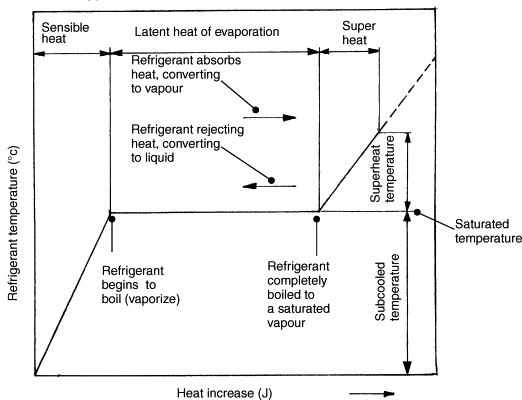 Latent heat is the amount of heat required to change the refrigerant from the liquid to the gaseous state. With a high latent heat, the refrigerant absorbs more heat from the load; this increases the cooling efficiency of the system. In addition, it reduces the required mass flow rate and the amount of refrigerant.
Latent heat is the amount of heat required to change the refrigerant from the liquid to the gaseous state. With a high latent heat, the refrigerant absorbs more heat from the load; this increases the cooling efficiency of the system. In addition, it reduces the required mass flow rate and the amount of refrigerant.
Non-corrosive, non-toxic, non-flammable
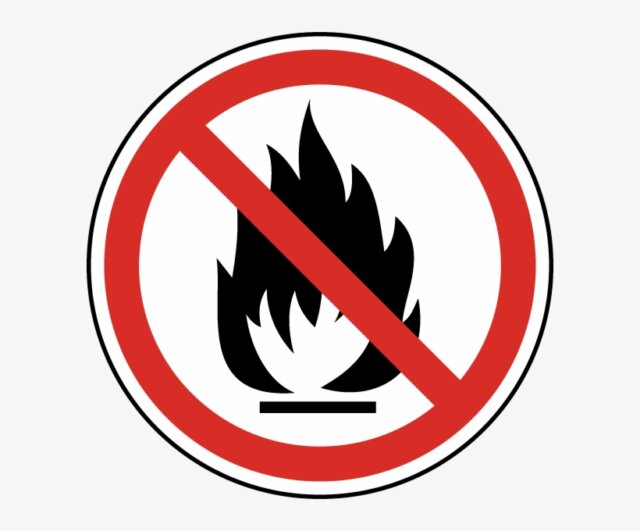 Refrigerants must not be toxic or lethal to air conditioning, human health or food. It must not cause any form of galvanic corrosion when in contact with metallic parts such as pipes and compressors.It must be compatible with non-metallic parts such as NBR tubing, O-rings (for sealing purposes).Since the refrigerant is compressed at high pressure and temperature inside the compressor, it must not cause any explosion or fire within the system and continue its non-flammable properties.
Refrigerants must not be toxic or lethal to air conditioning, human health or food. It must not cause any form of galvanic corrosion when in contact with metallic parts such as pipes and compressors.It must be compatible with non-metallic parts such as NBR tubing, O-rings (for sealing purposes).Since the refrigerant is compressed at high pressure and temperature inside the compressor, it must not cause any explosion or fire within the system and continue its non-flammable properties.
Compatibility with lubricants
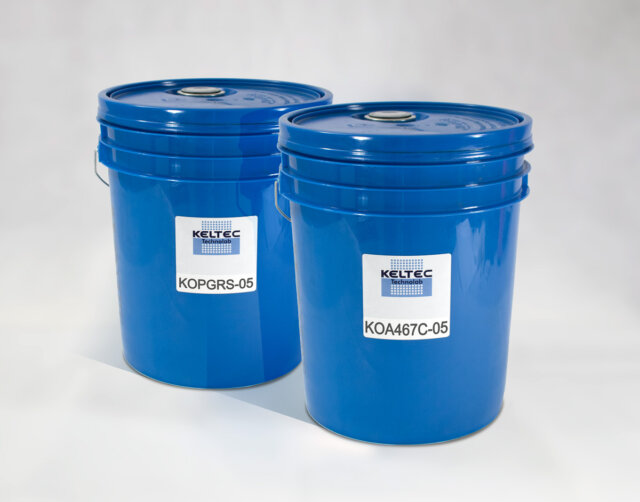 The refrigerant used must be compatible and miscible with the compressor oil (meaning that the refrigerant can be easily separated), as there is a greater chance of mixing inside the compressor and the following problems may occur.
The refrigerant used must be compatible and miscible with the compressor oil (meaning that the refrigerant can be easily separated), as there is a greater chance of mixing inside the compressor and the following problems may occur.
- Acid or sludge formation.
- Acid corrosion reduces the alkalinity in the oil.
- Decreased viscosity leads to inadequate lubrication.
- Oil carbonization with temperature increase.
- Compressor damage due to loss of lubricant performance and load carrying properties.
High suction gas density and low compression ratio.
High suction gas density at the compressor inlet means smaller compressors and less powerful compressor motors. After the refrigerant passes through the evaporator, the refrigerant gas expansion rate is not very high, i.e. Low expansion of the fluid to the gas.
Cheap and easily available
In case of repairs, maintenance or accidental leaks. The refrigerant must be readily available at a reasonable price.
Easy leak detection
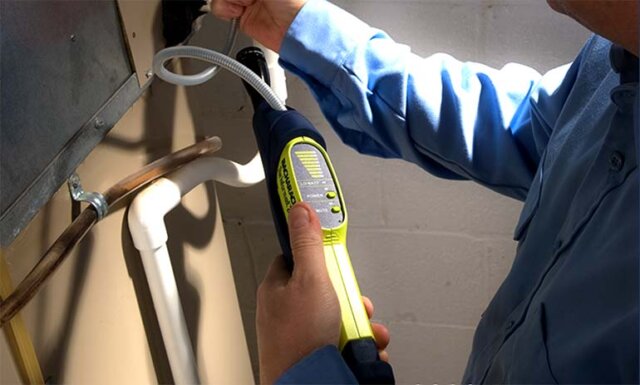 Leaks can be detected by smell, by using a soap solution at the connections and by holding the line under pressure for 20 to 30 minutes using a pressure test method to check for pressure drops.
Leaks can be detected by smell, by using a soap solution at the connections and by holding the line under pressure for 20 to 30 minutes using a pressure test method to check for pressure drops.
Recommend Chiller List

